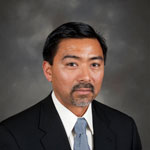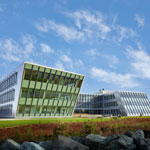At a Glance
Location
Seattle
Founded
1992
Employees
2
Specialty
Development of senior-living projects
Retirement communities
20+
Every day, 8,000 of the 74 million people born between 1946 and 1964 (the so-called “baby boomers”) are turning 65, and their retirements are transforming the face of senior-living communities.
“The demand for senior housing has been increasing over the past five years at about twice the supply being delivered due to the lack of financing and equity capital in the market—and that demand is only going to increase,” says Tom Reynolds, managing member of Seattle-based Morningside Development Group, a niche developer of retirement communities.
The picture he paints is daunting: as the boomers start to reach ages 72 and 73, they will come into the senior-housing market as independent, active residents, looking for living space for when they’re healthy and for when their needs change. The result? Housing demand will increase by multiples, and there will be major shortages in senior-living units, caregivers, and nurses.
Morningside Development Group, in concert with its partner, Livingcare Lifestyles, is working to remedy that. Reynolds’s interest in the senior market was first piqued in 1992, when he was working with a major general contractor, Absher Construction, owned by his friend Tom Absher. Reynolds toured a retirement community Absher was building, and he was intrigued by the scope and future demand of the industry. “At that time, environmental regulations were [becoming] increasingly complicated, and residential development was becoming more difficult, and we thought that senior housing had the predictability and upside potential to mitigate those challenges,” Reynolds says.
Top 4 Amenities of a Modern Retirement Community
1. Expansive common areas. Today’s retirees want options for on-site activities, so communities include ballrooms, spas, pubs, and bistros.
2. Larger units. One- and two-bedroom units come with dens, kitchenettes with stainless appliances, and walk in-closets.
3. Outdoor space. Nature trails, bocce ball courts, sustainable gardens, putting greens, and artistic elements such as water walls allow retirees to stay active.
4. Memory gardens. Communities that provide memory care often have memory gardens—outdoor spaces where residents can wander and partake in different outdoor activities without significant cognitive processing.
Today, Morningside Development Group develops new retirement communities from the ground up and expands existing retirement communities, which it acquires along with Livingcare and equity partners. The company’s latest communities, each branded as Quail Park, are scattered throughout the Northwestern United States. All of them meet changing demographic needs by offering more diverse housing options, including independent living, assisted living, and memory care.
“How we choose the market is really analytically driven,” says Reynolds’s son Shawn, the company’s director of development. “Determining whether there’s demand in a specific area has become a science over the past 15 years. We look at the number of seniors in the area, their income, even adult daughters—who are one of the primary factors in deciding where Mom and Dad live—in conjunction with the age and income demographics of the population.”
Reynolds, who has developed more than 25 communities over at least the past 20 years, says the structure of retirement communities has also changed over time. In the 1990s, Morningside built for the post-Depression generation, who were concerned about passing on a legacy to their children and thus less interested in extras, including overly elaborate common areas and nice finishes. “In a lot of cases, if the community was too nice, they weren’t comfortable,” Reynolds says. Today, Morningside is building for boomers, who want more bells and whistles to accommodate a new model of life: retirees are starting over at 65 by getting part-time jobs, going back to school, even running marathons. “We have large common areas with ballrooms, spas, pubs, bistros,” Reynolds says. “The units are also larger: with the post-Depression residents, we did a lot of studios; today, we do primarily one-bedroom and two-bedroom units with dens and a lot of storage.”
Otherwise, Reynolds says, each Quail Park community is different. The projects range in scope from 70 units to 359 units and provide different types of care and different amenities. “Our Eugene community provides only memory care, for residents suffering from Alzheimer’s and related dementia, while our Lynnwood community provides memory care, assisted living, and independent living, with 16 acres of grounds that will be developed for outdoor activities in a park-like setting,” Reynolds says. “The idea is to accommodate active, independent seniors as well as those in need of more individual assistance.” ABQ



